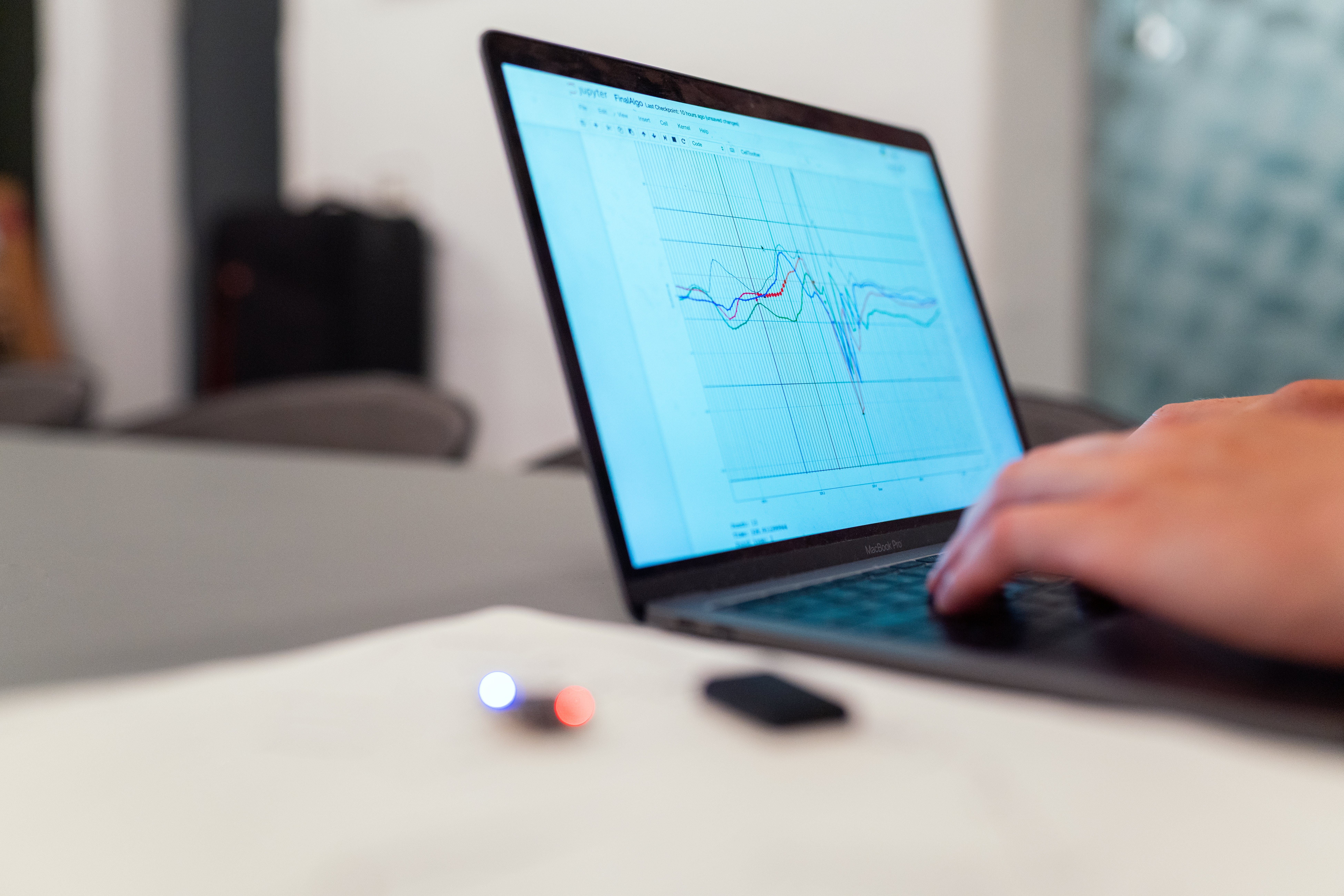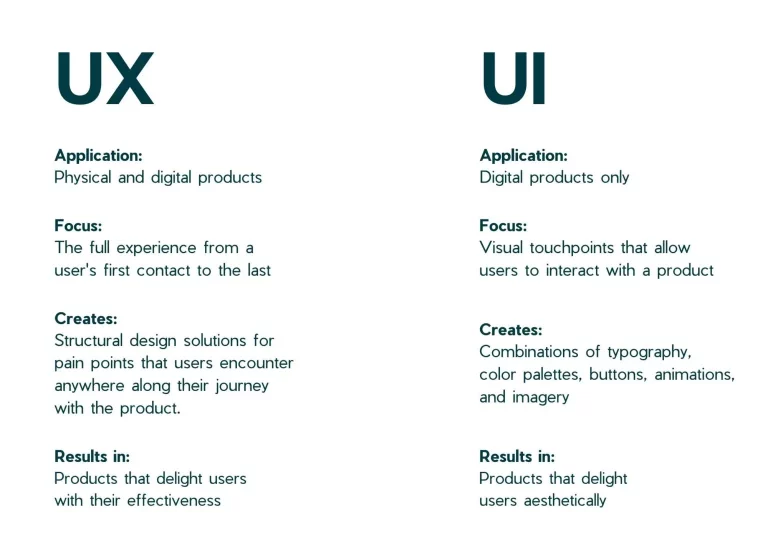
Job Profile
UX Designer
UX stands for “User Experience”. UX Designers deal with the analysis and design of the user experience and try to improve it constantly.
UX Designer Job Profile
What Is UX (User Experience)?
User experience (UX) design is the process by which design teams create products that provide users with meaningful and relevant experiences. This includes the design of the entire acquisition and integration process, including branding, design, usability, and function.
“NO PRODUCT IS AN ISLAND. A PRODUCT IS MORE THAN A PRODUCT. IT IS A COHESIVE, INTEGRATED SET OF EXPERIENCES. THINK THROUGH ALL OF THE STAGES OF A PRODUCT OR SERVICE – FROM INITIAL INTENTIONS THROUGH FINAL REFLECTIONS, FROM FIRST USAGE TO HELP, SERVICE, AND MAINTENANCE. MAKE THEM ALL WORK TOGETHER SEAMLESSLY.”
— DON NORMAN, INVENTOR OF THE TERM “USER EXPERIENCE”
Mostly it’s about the interaction a user has with a product or service. UX design takes every element into account that shapes this experience, how it makes the user feel, and how simple it is for the user to complete their desired tasks.
This can range from how a physical product feels in your hand to how simple the checkout process is when purchasing something online. The goal of UX design is to create simple, efficient, relevant, and enjoyable user experiences.
The first requirement for an exceptional user experience is to meet the customer’s exact needs without fuss or bother. Then there’s simplicity and elegance, which result in products that are a joy to own and use. True user experience extends far beyond simply giving customers what they say they want or providing a laundry list of features. To achieve a high-quality user experience in a company’s offerings, multiple disciplines, such as engineering, marketing, graphical and industrial design, and interface design, must be seamlessly integrated.
What Is the Salary of a UX Designer?
UX design is a lucrative field. You’ll learn not only how much money you can make as a UX designer in various locations around the world, but also what drives UX salaries up and down.
According to the platform careerfoundry, a User Experience (UX) Designer in Germany typically earns around 34,500 to 70.000€. In the USA you can earn more, the salary range is between 69,000 and 100,000 Dollars per year. This is the average monthly salary, which includes housing, transportation, and other perks.
Which factors influence the salary?
Salaries for User Experience UX Designers vary greatly depending on experience, skills, gender, and location.
Also, demand and the employer define the salary in the end. According to Payscale , the highest paying jobs in the United States are at Google, where the average salary is 127.000€. Amazon and Microsoft also pay well for UX designers, with salaries ranging between 113.000€ and 108.000€ per year. At the low end of the scale, IBM pays an average of 90.000€ per year, while UX designers at United Airlines typically earn around €78.000 per year. Keep in mind that non-tech companies often pay less for UX roles, and United Airlines is most likely an example of this.
UX Designer Demand
Employers’ interest in UX design is rising. According to Hired.com’s “Mind the gap” report, UX design is one of the skills with the greatest supply and demand gap. UX design was ranked fifth on LinkedIn’s list of skills that will get you hired in 2020. And it’s still important now: According to the Bureau of Labor Statistics, the User Experience (UX) field will grow by 27% in 2022. This is much faster than any other job on their list. This points to a growing demand for qualified professionals who can bridge the gap between business objectives and technological capabilities. Similarly, CNN Money’s Best Jobs in America 2015 reports, UX design will grow by 18 percent between 2015 and 2025. Indeed and LinkedIn have thousands of job listings, mostly in the United States, the United Kingdom, and Canada, with many remote options. As more organizations recognize the value of UX design, job opportunities and job security are expected to increase.
UX Designer Freelancer
Although there are only a few reliable framework data in this professional field, it indicates very well earning potential. User experience designers are frequently quoted daily rates of more than 500€. You can find reports of successful user experience designers if you search this job description. According to these reports, monthly earnings of more than 10.000€ are possible. Of course, this is based on a heavy workload and high fees. In general, the above-average earning potential of a user experience designer demonstrates how critical and valuable this strategically important field of activity is to businesses.
What Is the Difference Between UI and UX?

UI design is distinguishable in that it focuses on human-computer interaction. This can range from the usability of a desktop web page to the usability of an app screen on a mobile device. User interface designers (also known as interaction designers) concentrate solely on the interface of a product, not on the flow between interfaces or the user’s journey. User interface design and user experience design are inextricably linked. UX and UI designers collaborate to conduct user research, measure usability, and constantly test designs for any stand-out success to replicate or error to correct.
A UI designer typically has some knowledge of front-end development and graphic design. They concentrate on visual assets, whereas a UX designer concentrates on all aspects of the user experience.
For example, consider a website that provides movie reviews. Even if the UI for finding a film is flawless, the UX for a user seeking information about a small independent release will be generally mediocre if the underlying database only contains films from major studios.
Find qualified UX Designers.
What Is the Portfolio of a UX Designer?
To create seamless user experiences for products, services, and processes, UX designers combine market research, product development, strategy, and design. .
The Why, What, and How of product use as a UX Designer
The Why entails the users’ motivations for adopting a product, whether they relate to a task they wish to perform with it or to values and views that users associate with product ownership and use. The What is concerned with what people can do with a product—its functionality. Finally, the How is concerned with the design of functionality in an approachable and aesthetically pleasing manner. To create products that users can form meaningful experiences with, UX designers begin with the Why before determining the What and, finally, the How. In software design, you must ensure that the product’s “substance” is delivered through an existing device and provides a seamless, fluid experience.
They serve as a link between the company and the customer, allowing it to better understand and meet their needs and expectations.
Key Skills for a UX Designer
According to Lesley University, UX designers can benefit from mastering these five applied skills.
- Research
UX designers must understand what their audiences want and how they see the world to do their jobs effectively. According to UXmatters , this entails mastering the ability to plan, conduct, and analyze findings from a variety of research methods. User testing and analytical research skills are especially beneficial. - Information Architecture
Information architecture entails organizing data in a comprehensible manner. Information architecture, which applies to websites, apps, software, printed materials, and even physical spaces, may include systems such as labeling, navigation, and search functions. - Wireframing
A wireframe is a blueprint for each interface screen. Its primary purpose is to demonstrate how something works rather than how it appears. The elements that must be present from page to page are defined by wireframing. It contains all the interface components required for all possible interactions and is typically designed in grayscale with boxes and lines. - Prototyping
Designers can test functionality using prototypes. They assist designers in ensuring that a system and its users are a good fit before construction on the final product begins. Designers can use prototypes to test both page functionality and overall navigation. After identifying problems, the UX designer may go through several iterations before arriving at a design that meets both business and user goals. UX designers must be able to prototype quickly and effectively. - Communication through Visuals
UX designers must be proficient in visual language because the design is highly graphic in nature. Visual communication proficiency includes an understanding of concepts such as:
Layout
Color
Typography
Icons
Images
Theoretical Design
Find Qualified Freelance-Experts.

Your Contact Person
Sören Elser
Co-founder of ElevateX GmbH and your contact for the strategic use of freelancers.
